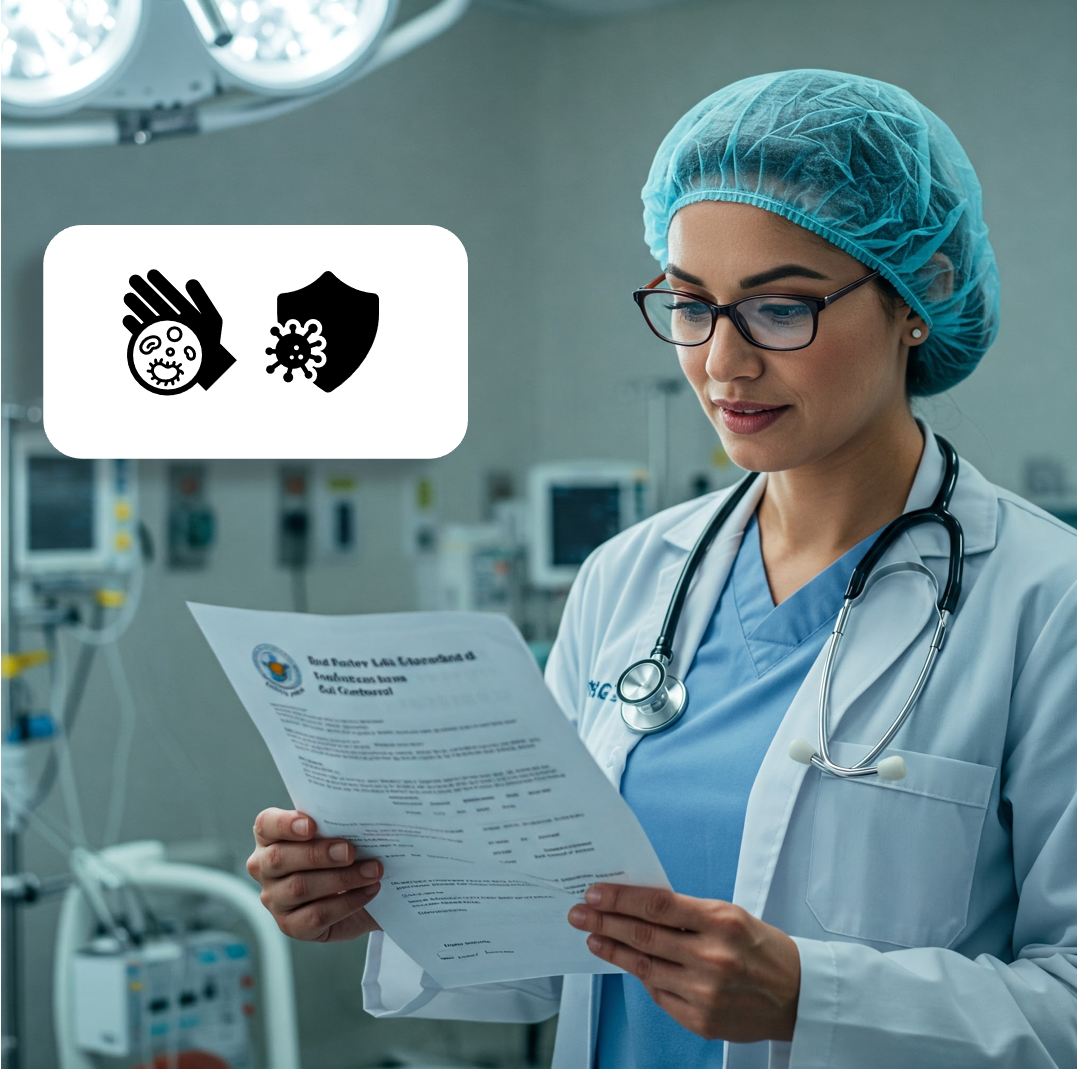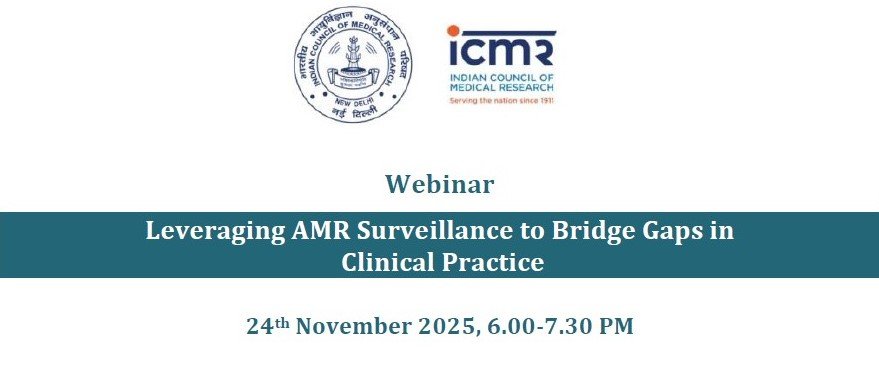This post is for academic purposes only. Please read the original guidelines if you intend to use the guideline for clinical purposes.
A summary of the key elements and objectives related to infection prevention and control, as outlined in the provided NABH accreditation standards documents.
Overall Theme: A Comprehensive and Coordinated IPC Programme
The core message of these documents revolves around the need for a comprehensive, documented, and actively managed Infection Prevention and Control (IPC) programme. The programme is not just a set of guidelines but a system integrated into all aspects of the hospital.
“The organisation has a comprehensive and coordinated Infection Prevention and Control (IPC) programme aimed at reducing/eliminating risks to patients, visitors, providers of care and community.” (IPC.1)
Key Idea: The IPC programme should be proactive in risk reduction and implemented across the entire organisation, encompassing clinical areas and support services.
Key Standards and Objectives
The documents break down the requirements into eight main standards (IPC.1 to IPC.8), each with several objective elements categorized as “Core,” “Commitment,” and “Achievement.” Below are summaries of the standards and their objective elements.
2.1. IPC.1: Comprehensive and Coordinated IPC Programme
Core: The programme must be documented, incorporating structure, objectives, processes, and surveillance procedures, and be based on scientific knowledge, guidelines, and local priorities.
“The infection prevention and control programme is documented, which aims at preventing and reducing the risk of healthcare associated infections in the hospital.” (IPC.1.a)
Commitment: The programme must:
- Identify and manage high-risk activities. Examples include “aerosol-generating procedures; handling blood and body fluids/spills, specimens, and sharps; and exposure to contaminated medical devices/equipment and bio-medical waste”.
- Be reviewed and updated at least annually.
- Be overseen by a multi-disciplinary committee.
- Be led by an Infection Prevention and Control Officer (IPCO) and Nurse(s).
- Achievement: The IPC programme must be reviewed based on infection prevention and control assessment tools
Quote: “The infection prevention and control programme is reviewed based on infection prevention and control assessment tool.” (IPC.1.d)
2.2. IPC.2: Adequate and Appropriate Resources
Core:
The management must ensure the availability of resources required, including financial allocation from the annual budget, personnel and materials.
Commitment:
- Adequate PPE (Gloves, Protective eyewear, Masks, Gown, Boots/shoe covers and cap/hair cover) must be available and used correctly by staff.
- Accessible hand hygiene facilities (washbasins with running water, soap, and hand-rub dispensers) in patient-care areas are essential.
- Isolation/barrier nursing facilities are to be available and managed appropriately with defined procedures.
2.3. IPC.3: Implementing IPC in Clinical Areas
Core:
Adherence to standard precautions at all times, including hand hygiene, appropriate use of PPE, respiratory etiquettes, safe injection practices, sterile instruments and devices, clean and disinfected environmental surfaces, cleaning and disinfection of equipment, and needle stick and sharps injury prevention.
“Adherence to standard precautions is one of the fundamental tenets of infection prevention and control.” (IPC.3.a)
Core:
Adherence to international/national guidelines on hand hygiene. A good reference is the WHO guidelines on hand hygiene in health care of 2009.
Commitment:
- Adherence to transmission-based precautions.
- Adherence to the “One needle, One syringe, Only one-time” practice (safe injection practices).
- Implementing an antimicrobial usage policy.
- Implementing the antimicrobial stewardship programme
2.4. IPC.4: Implementing IPC in Support Services
Commitment:
- Implementing appropriate engineering controls to prevent infections.
- Developing and implementing a plan to reduce infection risks during construction and renovation.
- Adherence to housekeeping procedures.
- Proper collection and handling of biomedical waste (BMW), following statutory guidelines.
- Adherence to laundry and linen management processes.
- Adherence to kitchen sanitation and food-handling issues.
2.5. IPC.5: Actions to Prevent Healthcare-Associated Infections (HAIs)
Commitment: Taking action to prevent;
- Catheter-associated urinary tract infections
- Ventilator-associated pneumonia
- Central line-associated bloodstream infections
- Surgical site infections
Key idea: The implementation and monitoring of care bundles for each specific risk.
2.6. IPC.6: Surveillance to Capture and Monitor Infection Data
Core:
The surveillance must track and analyse infection risks, rates, and trends through active and passive methods.
Commitment:
- Verification of data collected by the IPC team.
- Surveillance is directed towards high-risk activities.
- Surveillance must include monitoring compliance with hand hygiene.
- Surveillance must include mechanisms to capture the occurrence of multi-drug resistant organisms (MDROs).
- Surveillance must include monitoring the effectiveness of housekeeping services.
Commitment:
- Providing feedback on surveillance to healthcare providers.
- Identification and control of infection outbreaks.
- Analysing surveillance data and taking corrective/preventive actions.
2.7. IPC.7: Sterilisation and Disinfection of Instruments
Commitment:
- Adequate space and appropriate zoning for sterilisation activities are needed.
- Cleaning, packing, disinfection and/or sterilisation, storing, and the issue of items are done as per the written guidance.
- Reprocessing of instruments, equipment and devices is done as per written guidance
- Regular validation tests for sterilisation must be carried out.
- Implementing established recall procedures in the event of a breakdown in sterilisation.
2.8. IPC.8: Actions to Prevent Healthcare-Associated Infections in Staff
Commitment:
- Implementing occupational health and safety practices.
- Implementing an immunisation policy for staff.
- Implementing work restrictions for staff with transmissible infections.
- Implementing measures for blood and body fluid exposure prevention.
- Providing post-exposure prophylaxis to all staff members concerned.
Key Elements Across All Standards
| Documentation | Every aspect of the IPC programme must be documented, from policies and procedures to training records and surveillance data. |
| Compliance | The organisation must ensure adherence to established protocols, guidelines and regulations. |
| Training and Education | Staff must be adequately trained on IPC practices and policies. |
| Multi-disciplinary Approach: | IPC requires the active participation of various departments and levels of staff, coordinated by the infection control team. |
| Continuous Improvement | Regular audits, data analysis, and feedback loops are crucial for continuous improvement and adaptation of the IPC programme. |
| Evidence-Based Practices | IPC protocols should be based on current scientific literature, international guidelines and best practices. |
Conclusion
These standards highlight the critical role of a robust IPC programme in protecting patients, staff, and the community from healthcare-associated infections. The key message is the need for a structured, proactive, and evidence-based approach driven by data and continuous evaluation. Adherence to these NABH standards is not only a requirement for accreditation but also essential for ensuring safe and quality patient care.
Short Answer Quiz
- What is the primary goal of an Infection Prevention and Control (IPC) programme?
- What are three examples of high-risk areas where the risk of healthcare-associated infections is elevated?
- Briefly explain the concept of “standard precautions.”
- What does the term “antimicrobial stewardship” mean?
- List three essential elements that are needed when considering good housekeeping procedures.
- What is a “care bundle” in the context of infection prevention and control?
- Name two methods an organisation can use to perform surveillance for infection risks.
- Why is the regular validation testing of sterilisation processes essential?
- How does an organisation implement work restrictions for healthcare staff with communicable infections?
- What is the purpose of providing post-exposure prophylaxis?







